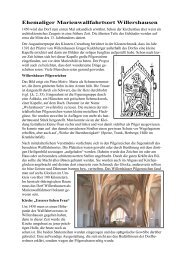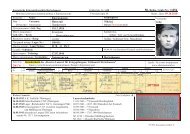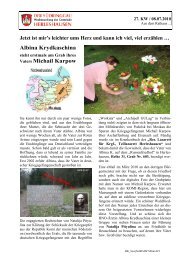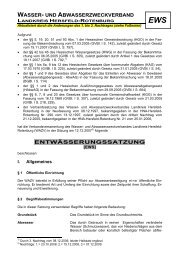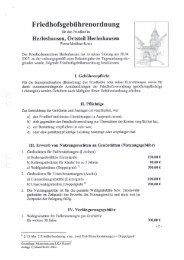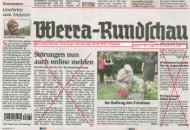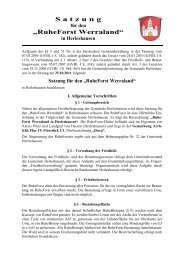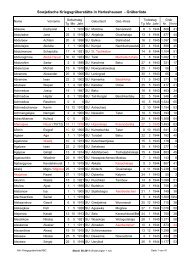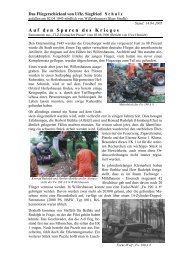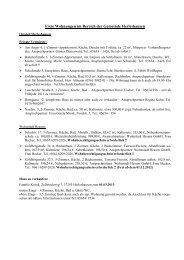Soviet War Memorial Herleshausen
Soviet War Memorial Herleshausen
Soviet War Memorial Herleshausen
Create successful ePaper yourself
Turn your PDF publications into a flip-book with our unique Google optimized e-Paper software.
This commemorative ceremony was attended by<br />
representatives of public life, among them also the<br />
then <strong>Soviet</strong> Ambassador in Bonn. A Russian-<br />
Orthodox priest who visited the cemetery in 1960<br />
gave the site his blessing.<br />
Foto: ~1957<br />
Karl Fehr was honored in 1967 with the<br />
Bundesverdienstkreuz. To him the many letters<br />
from the relatives of the soviet prisoners of war<br />
buried here were of far greater significance. Viktor<br />
Nowikow’s mother wrote: ”I cannot find the words<br />
to thank you for the thoughtfulness that you gave<br />
an old mother who has lost her beloved child. My<br />
eyes are never dry when I look at the photograph<br />
of my son’s gravestone. I send you my motherly<br />
gratitude for your efforts in the interest of my son<br />
Viktor and myself. How much pain the war has<br />
inflicted upon the mothers, the women, the fathers<br />
and the children ...”.<br />
The last letter that Karl Fehr received from the<br />
<strong>Soviet</strong> Union (he died in 1973 at the age of 83)<br />
came to him out of the Ukraine: ”I would have liked<br />
to have sent a bit of money for the upkeep of my<br />
father’s grave. Most of all I would like to come to<br />
<strong>Herleshausen</strong> myself if only that were possible ...<br />
Instead I am sending you some flower seeds. I’m<br />
not sure whether you know these flowers in<br />
Germany. They are flowers that develop big black<br />
oilseeds in late summer. We have them<br />
everywhere here in the Ukraine and my father<br />
always loved them so much ...”<br />
In the following year, sunflowers were blooming on<br />
Iwan Antonow’s grave.<br />
To this day and thanks to the services of the<br />
German Red Cross and the Volksbund letters still<br />
arrive in <strong>Herleshausen</strong> with requests for pictures of<br />
the cemetery and of the graves of the beloved<br />
ones. On July 13, 1971 Maria Loginowa Tkatsch<br />
from Odessa stood at her father’s grave. She was<br />
the first relative of a war victim to receive a visa for<br />
the trip to Germany: ”Unfortunately I can only tell<br />
<strong>Soviet</strong> <strong>War</strong> <strong>Memorial</strong> <strong>Herleshausen</strong>/Germany<br />
2 (2007.10.26)<br />
you through a translator how I felt when I finally<br />
stood in the beautiful forest cemetery. In the name<br />
of my mother, my siblings and all of my relatives I<br />
want to say thank you for taking care of my<br />
father’s grave over all these years ..... If you were<br />
able to speak Russian you would be even better<br />
able to understand what I wanted to say to you.”<br />
This was how she said goodbye to the Volksbund<br />
who looked after her during her visit in Germany.<br />
Iman Zeinalow of Aserbeidschan with mayor<br />
Uwe Hartmann at his father’s grave in<br />
November 1985<br />
The ‘Glasnost era’ of Michail Gorbatschow made it<br />
possible for more relatives to visit the cemetery in<br />
<strong>Herleshausen</strong>. Among them was Imam Zeinalow<br />
of Aserbeidschan who paid his final tribute to his<br />
father with the Moslem ritual ceremony of<br />
scattering earth from his homeland over his<br />
father’s grave.<br />
The origin of the camp<br />
In 1938 when the Reichsautobahn by <strong>Herleshausen</strong><br />
was being built, several barracks camps<br />
were set up to house the workers. One of these<br />
camps, located on the road to Frauenborn, was<br />
taken over by the Wehrmacht in 1940 and<br />
established as a camp for prisoners of war.<br />
First french and later soviet prisoners were<br />
interned there and used for ground work at the<br />
autobahn building site. When tuberculosis broke<br />
out in Camp ‘Ramsborn’ near Eisenach the<br />
prisoners still able to work were moved out of<br />
<strong>Herleshausen</strong>.



